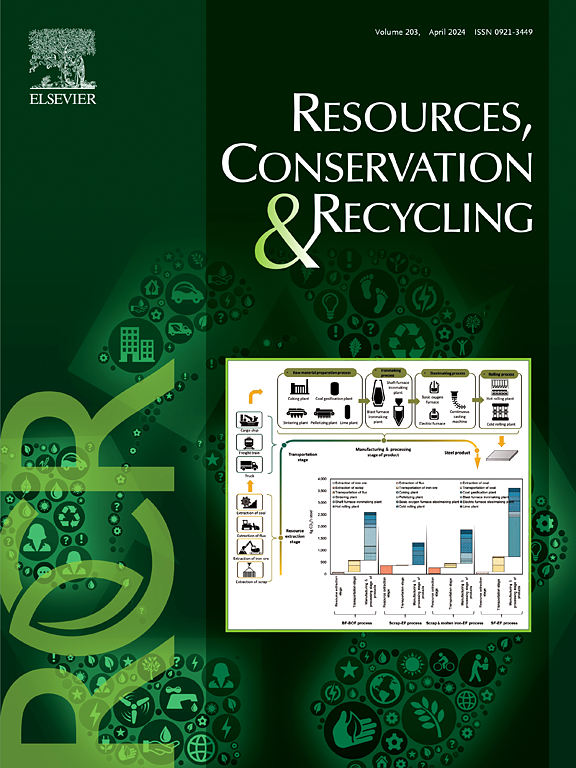Assessing and calculating closed-loop recycled content: The Product-oriented Closed-loop Material Indicator (PCMI)
IF 10.9
1区 环境科学与生态学
Q1 ENGINEERING, ENVIRONMENTAL
引用次数: 0
Abstract
Measuring circularity is crucial to identify the status quo, set targets, monitor performance, and take action to pursue circular economy efforts. Regulators increasingly require companies to use and disclose recycled content in new products. However, calculating recycled content from closed loops in products is challenging and, so far, has not yet been implemented sufficiently in existing circularity indicators. Our study’s contribution consists of three parts: First, we conducted a literature review of existing indicators. Second, we developed the new Product-oriented Closed-loop Material Indicator (PCMI), which includes a detailed calculation method for a product’s closed-loop recycled content. Third, we applied the PCMI in an illustrative case study of recycled steel in cars. We show that the PCMI is comprehensive, versatile, and scalable. Thus, the PCMI provides the foundation to accurately measure the closed-loop recycled content in products, allowing companies and policymakers to steer towards higher levels of circularity.

评估和计算闭环回收含量:面向产品的闭环材料指标(PCMI)
衡量循环度对于确定现状、设定目标、监测绩效以及采取行动追求循环经济至关重要。监管机构越来越多地要求企业在新产品中使用和披露回收成分。然而,计算产品中闭环的回收成分是具有挑战性的,到目前为止,在现有的循环指标中尚未充分实施。本研究的贡献包括三个部分:首先,我们对现有指标进行了文献综述。其次,我们开发了新的以产品为导向的闭环材料指标(PCMI),其中包括产品闭环回收含量的详细计算方法。第三,我们将PCMI应用于汽车再生钢的实例研究。我们展示了PCMI是全面的、通用的和可扩展的。因此,PCMI为精确测量产品中的闭环回收成分提供了基础,使公司和政策制定者能够朝着更高水平的循环发展。
本文章由计算机程序翻译,如有差异,请以英文原文为准。
求助全文
约1分钟内获得全文
求助全文
来源期刊

Resources Conservation and Recycling
环境科学-工程:环境
CiteScore
22.90
自引率
6.10%
发文量
625
审稿时长
23 days
期刊介绍:
The journal Resources, Conservation & Recycling welcomes contributions from research, which consider sustainable management and conservation of resources. The journal prioritizes understanding the transformation processes crucial for transitioning toward more sustainable production and consumption systems. It highlights technological, economic, institutional, and policy aspects related to specific resource management practices such as conservation, recycling, and resource substitution, as well as broader strategies like improving resource productivity and restructuring production and consumption patterns.
Contributions may address regional, national, or international scales and can range from individual resources or technologies to entire sectors or systems. Authors are encouraged to explore scientific and methodological issues alongside practical, environmental, and economic implications. However, manuscripts focusing solely on laboratory experiments without discussing their broader implications will not be considered for publication in the journal.
 求助内容:
求助内容: 应助结果提醒方式:
应助结果提醒方式:


